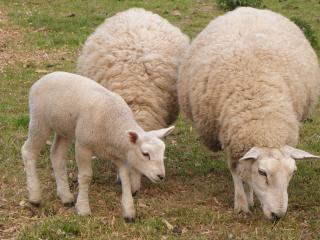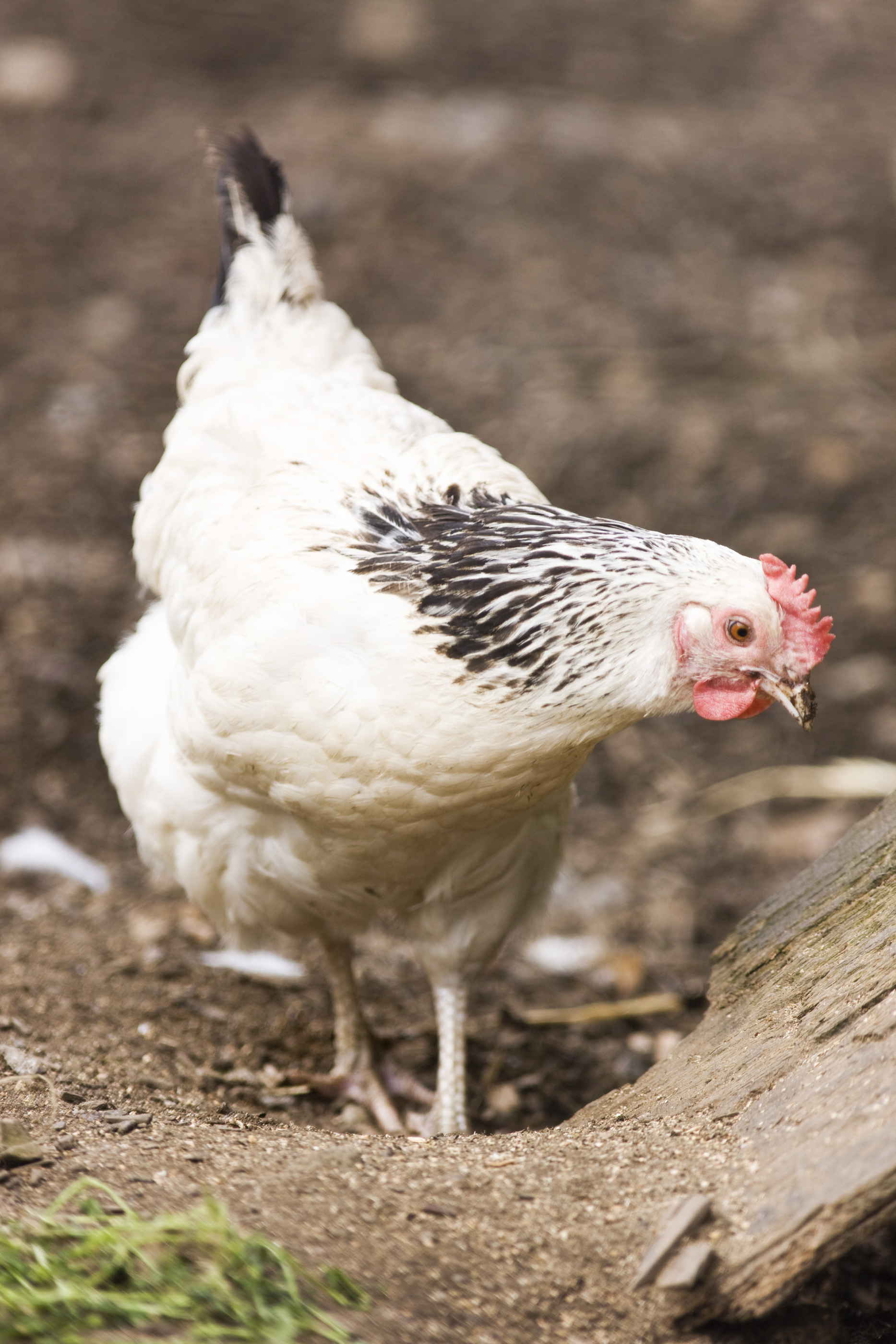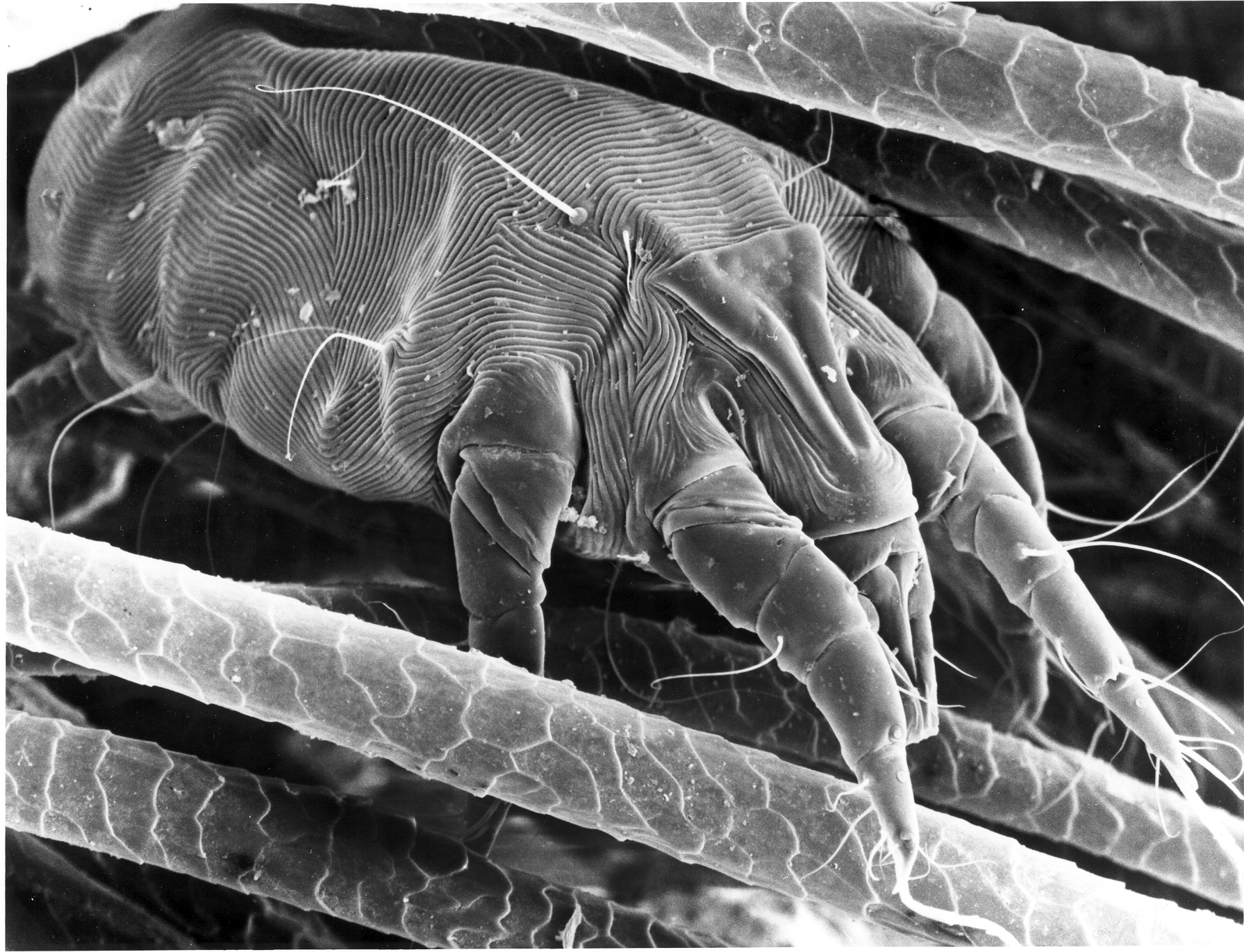The use of Vaccination and diagnostics to support the sustainable control of Ectoparasites
Published on 25 October 2010 in Sustainability and Communities , Food, health and wellbeing

Introduction
Sheep scab disease is caused by the sheep scab mite feeding on the surface of the skin which causes a highly ‘itchy’ skin lesion. During infection the number of mites increases over a period of a few weeks to several months. During this time the lesion area can increase to cover almost the entire body surface of the sheep causing much suffering to the animal as well as a significant loss in condition. Sheep scab is thus of economic importance as well as a major welfare concern and, with the likelihood of increasing acaricide resistance and the lack of new chemicals being generated by the commercial industry, the development of alternative control measures such as vaccination and diagnostic tools are urgently required.
 Poultry red mites are causing major concerns in the egg industry. Mites feed on blood of the birds during the night hours leading to feather loss and skin conditions, reduction in egg laying performance, anaemia and, in severe infestations, death. These mites have become resistant to most if not all of the acaricides currently licensed for their control, leading to massive populations of red mites in commercial poultry houses which can have a devastating effect on the birds health and welfare.
Poultry red mites are causing major concerns in the egg industry. Mites feed on blood of the birds during the night hours leading to feather loss and skin conditions, reduction in egg laying performance, anaemia and, in severe infestations, death. These mites have become resistant to most if not all of the acaricides currently licensed for their control, leading to massive populations of red mites in commercial poultry houses which can have a devastating effect on the birds health and welfare.Key Points
- Research at Moredun towards vaccines to control ectoparasites in sheep and poultry has shown the potential of such an approach. Novel vaccine candidates are being identified through an understanding of host-parasite interactions and similar or homologous proteins which are protective when used as vaccines against other parasites have been identified.
- Moredun scientists have also developed a diagnostic test for sheep scab (based on blood antibodies to a specific antigen), which can detect subclinical infections and may thus aid the rapid treatment and spread of this highly infectious mite.
Research Undertaken
Sheep Scab Research
 Moredun’s work is focussed on the development of a vaccine against the sheep scab mite through an understanding of the development, progress and immune reaction during disease and recovery.
Moredun’s work is focussed on the development of a vaccine against the sheep scab mite through an understanding of the development, progress and immune reaction during disease and recovery.- Recent studies have revealed that the lesion is generated through the interaction of specific mite-derived proteins which interact with receptors involved in the innate immune response, which leads to the pro-inflammatory reaction resulting in the skin lesion. This reaction causes fluid and cells to be secreted onto the skin surface and the mite feeds on these through specially adapted mouth parts.
- Moredun scientists have applied molecular tools (microarray) to investigate both the skin (host) and scab mite genes which are involved in these reactions.
- Employing ‘state of the art’ pathway analysis we are beginning to unravel the complex host-parasite interactions which occur during mite infections.
- Vaccine candidates based on these findings as well as on homologue proteins shown to be effective candidates in vaccines to other parasites are now being identified.
- A diagnostic ELISA test based on the detection of antibodies generated in the blood of infected animals, has been developed. The test is specific, sensitive and robust, and a recent field study involving an outbreak of sheep scab has shown that we can detect infective animals before clinical symptoms appear.
 This test has the potential, therefore, to be highly useful in the rapid detection and treatment of infection thus limiting the spread of disease.
This test has the potential, therefore, to be highly useful in the rapid detection and treatment of infection thus limiting the spread of disease.
Poultry Red Mite Research
- Moredun researchers have also developed a laboratory-based blood feeding assay for the poultry red mites. This has enabled the demonstration for the rapid ‘anti-mite’ effect of antibodies placed into the blood feed. Indeed, mites fed antibodies from one fraction resulted in 30% mortality within 24 hours after just one feed. These results are very encouraging, and work is focussing on the identification of the relevant antigens.
Policy Implications
Increasing awareness of food security both for Scotland as well as Globally, in the face of environmental change and increasing populations, dictates that the sustainable control of livestock parasites is likely to be a critical issue. The Scottish Government, through discussions with Stakeholders and advisors including the Moredun Research Institute, have generated a draft statute to improve the control of sheep scab. It is envisaged that the diagnostic test and, when available the vaccine, will be important elements in the successful control of this disease.
Support for the development of a poultry red mite vaccine has come principally from the industry through levy board funding from, for example, the British Egg Market Board Trust. While a cohesive policy in Scotland for the development and implementation of a vaccine has not been defined, further support is likely to be limited to the commercial sector.
Author
Dr John Huntley john.huntley@moredun.ac.uk
Topics
Sustainability and Communities , Food, health and wellbeing







